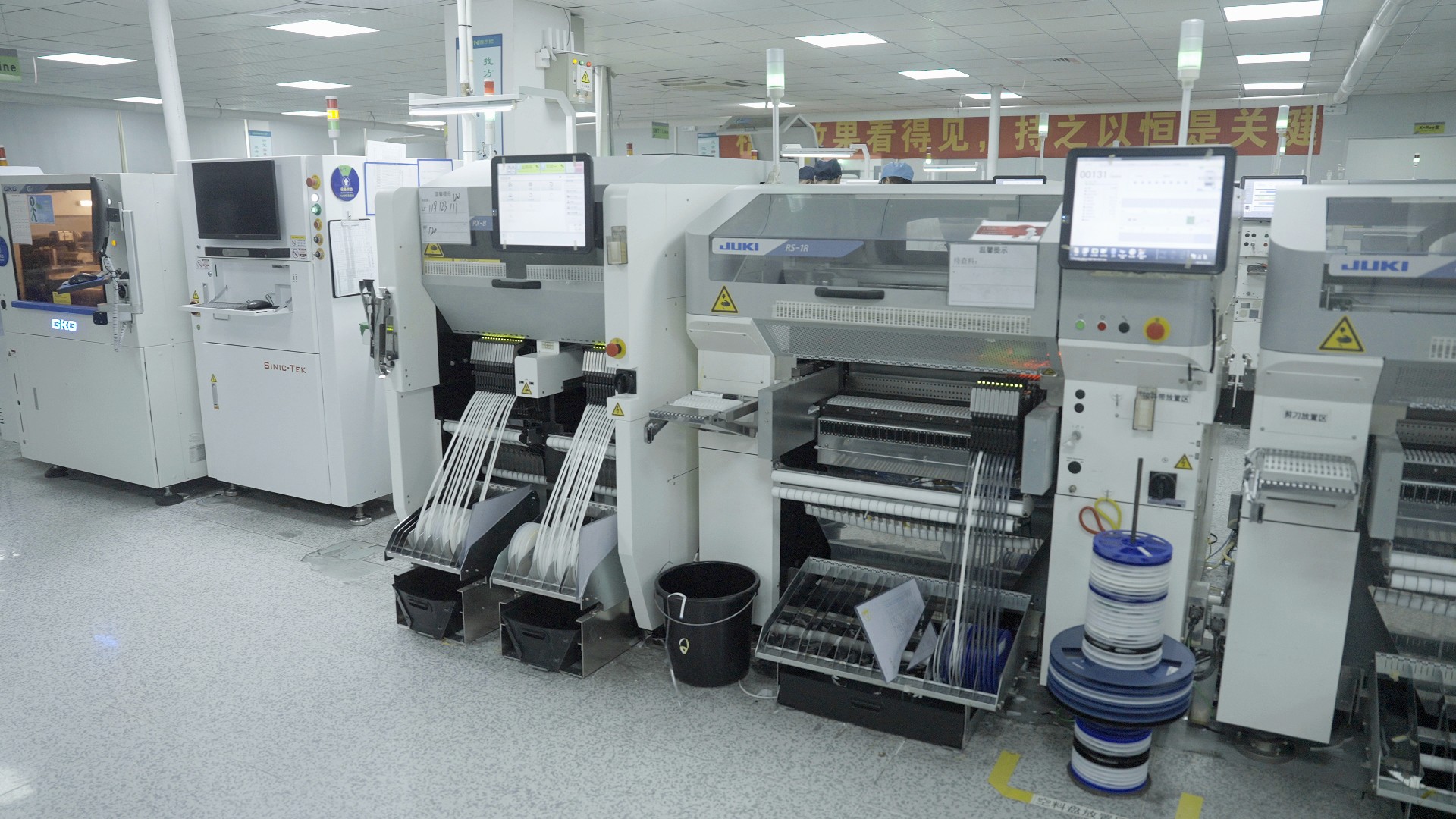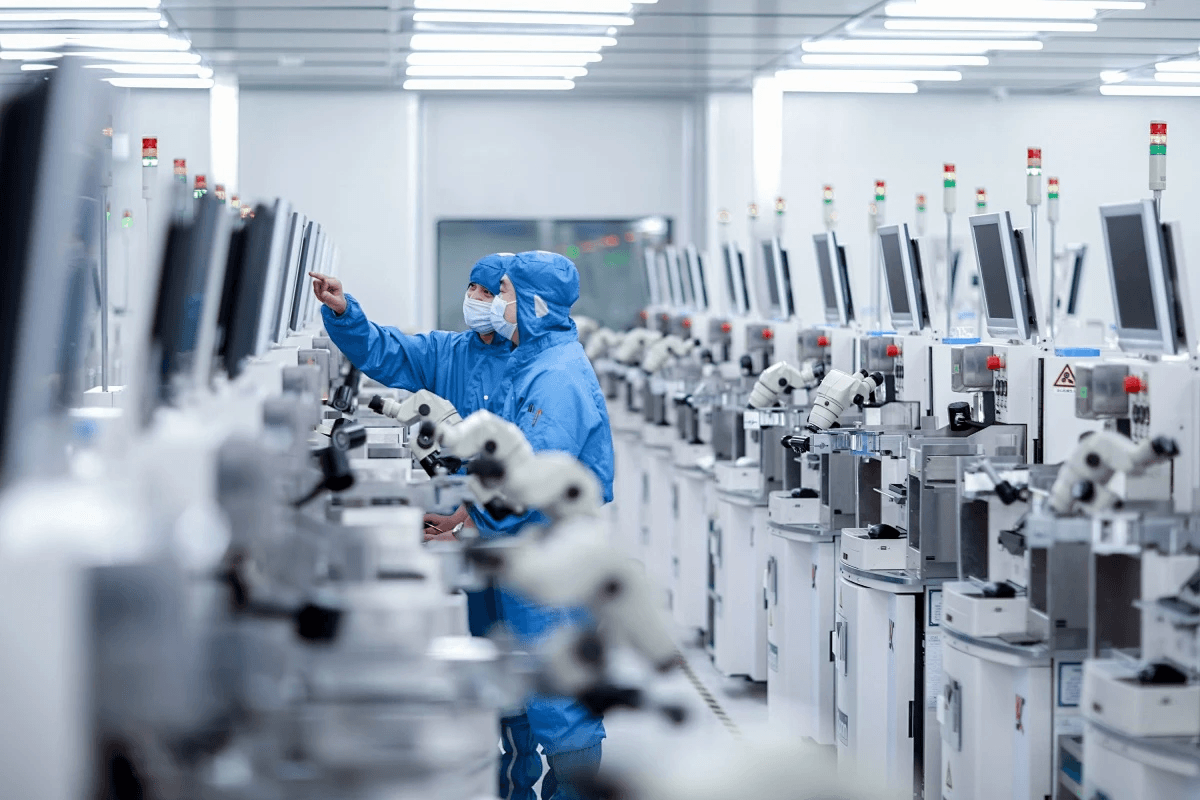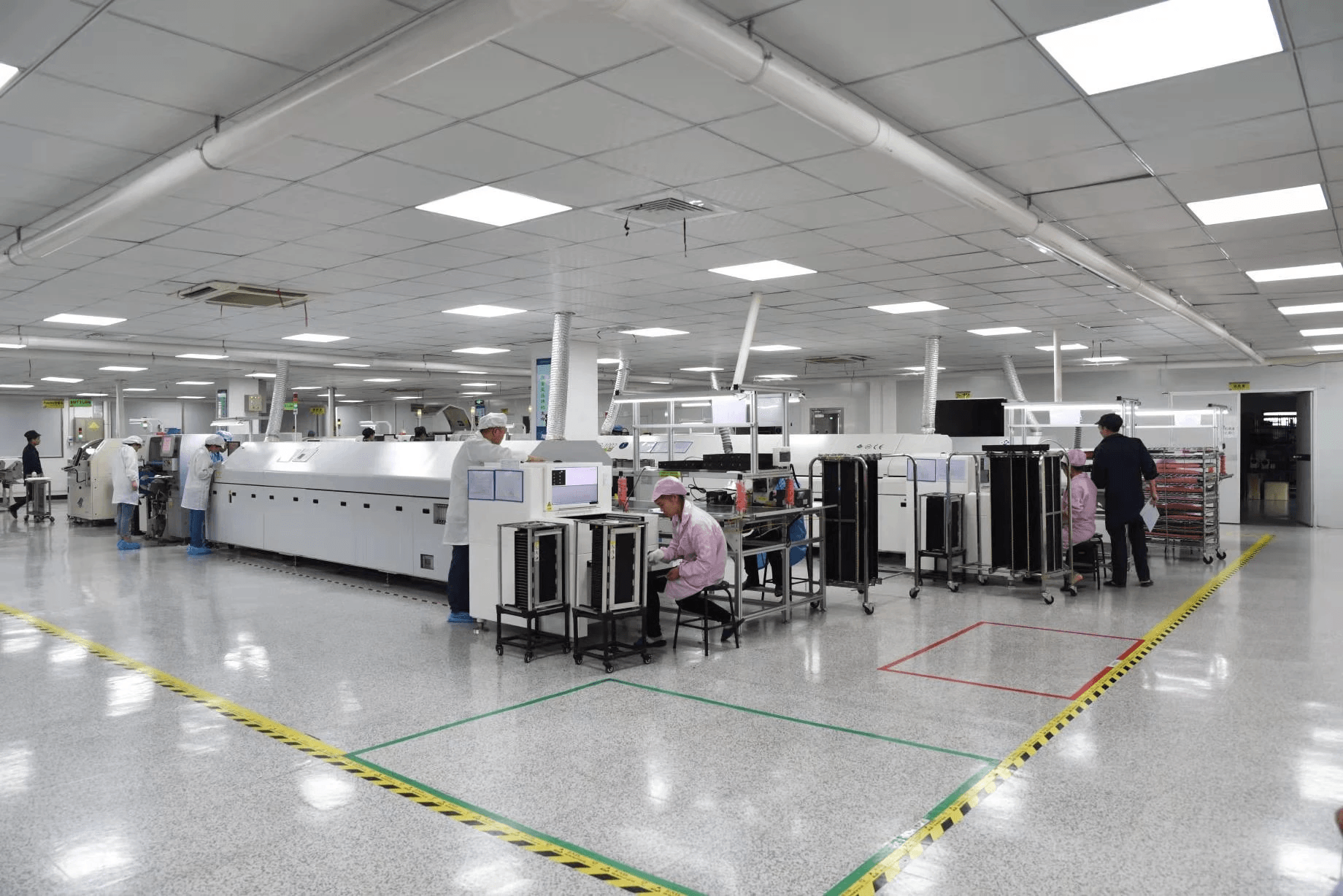Introduction

In the fast-paced world of technology, electronics manufacturing machines play a pivotal role in bringing innovative products to life. These machines are not just tools; they are the backbone of the entire electronics production process, ensuring efficiency and precision at every step. As we delve deeper into this fascinating field, it becomes clear that understanding what machines are used to make electronics is essential for anyone looking to grasp the complexities of modern manufacturing.
Importance of Electronics Manufacturing Machines
Electronics manufacturing machines are crucial for producing everything from smartphones to sophisticated medical devices. Without these advanced tools, the mass production of electronic components would be slow and error-prone, hindering technological advancement. The effectiveness of SMT line equipment, for instance, enhances assembly speed and accuracy, making it indispensable in today’s high-demand market.
Understanding the Electronics Manufacturing Process
To appreciate how electronics come together, one must first understand electronic product manufacturing as a whole. This process encompasses various stages including design, assembly, testing, and quality control—all facilitated by specialized machinery. Each step relies heavily on specific equipment; thus, knowing what is an example of electronics manufacturing can illuminate how these intricate systems work together seamlessly.
Key Players in Electronics Production
The landscape of electronics production features numerous key players ranging from manufacturers to EMS providers who streamline operations for companies worldwide. EMS in manufacturing has become increasingly significant as it allows businesses to focus on core competencies while outsourcing complex processes like Printed Circuit Board Assembly (PCBA). By collaborating with these experts in the field, companies can leverage cutting-edge technologies and improve their overall production efficiency.
Overview of Electronics Manufacturing Machines

Electronics manufacturing machines are the backbone of the modern electronics production process, enabling the creation of everything from smartphones to sophisticated medical devices. Understanding these machines is crucial for anyone looking to dive into electronic product manufacturing. With a variety of equipment designed for specific tasks, manufacturers can achieve higher efficiency and quality in their output.
Types of Machines Commonly Used
When considering what machines are used to make electronics, several types come to mind. For instance, pick and place machines play a pivotal role in assembling components onto printed circuit boards (PCBs). Additionally, reflow soldering machines ensure that connections are solidified through heat application, while wave soldering machines cater to through-hole components.
Moreover, testing equipment is essential for quality assurance throughout the production process. These include Automated Optical Inspection (AOI) systems that detect defects on PCBs and functional testers that verify product performance post-assembly. By incorporating these various machines into their operations, manufacturers can streamline workflows and reduce errors significantly.
Role of SMT Line Equipment
Surface Mount Technology (SMT) line equipment has revolutionized how electronics are manufactured by allowing for more compact designs and improved assembly speeds. The use of SMT line equipment enables manufacturers to place components directly onto PCBs without needing holes drilled in them, which leads to a more efficient assembly process. This technology not only enhances productivity but also supports the miniaturization trend seen in modern electronic products.
In essence, SMT line equipment includes several critical components such as stencil printers for applying solder paste and placement machines that position surface mount devices accurately on boards. The synergy between these machines ensures a seamless flow from one stage of production to another—ultimately leading to higher-quality products at lower costs. This efficiency is vital as companies strive to meet consumer demands while maintaining profitability.
Innovations in Electronics Manufacturing
The world of electronics manufacturing is constantly evolving with innovative technologies reshaping how products are made. Automation plays a significant role here; advanced robotics are being integrated into assembly lines to further enhance precision and speed while minimizing human error—a win-win situation! Moreover, Industry 4.0 concepts like IoT-enabled machinery allow real-time monitoring and data collection for better decision-making during production.
Another exciting area is additive manufacturing or 3D printing—an emerging technique that's making waves in electronic product manufacturing by enabling rapid prototyping and low-volume production runs without traditional tooling constraints. This flexibility allows designers greater freedom when creating complex geometries that were previously difficult or impossible with conventional methods. As we look ahead, it's clear that innovations will continue driving advancements in electronics manufacturing machine capabilities.
What Machines Are Used to Make Electronics?

Electronics manufacturing machines play a critical role in the production of electronic devices, ensuring efficiency and precision throughout the process. When we ask, What machines are used to make electronics? we uncover a fascinating world of technology that transforms raw materials into sophisticated products. From Printed Circuit Board Assembly (PCBA) to advanced SMT line equipment, each machine contributes uniquely to the final output.
Essential Equipment in PCB Assembly
In the realm of electronics manufacturing, PCB assembly is a cornerstone process that relies on several essential machines. At the heart of this operation are solder paste printers, pick and place machines, and reflow soldering machines—all vital for assembling electronic components onto printed circuit boards. These electronics manufacturing machines work in unison to ensure that every component is accurately placed and securely soldered, allowing for high-quality electronic product manufacturing.
The solder paste printer applies a precise amount of solder paste onto the PCB pads before components are positioned. This ensures effective electrical connections once everything is heated during reflow soldering. Without these essential tools, achieving reliable functionality in electronic devices would be challenging at best.
A Deep Dive into Pick and Place Machines
Pick and place machines are often regarded as the stars of the PCB assembly line—after all, they’re responsible for placing thousands of tiny components with pinpoint accuracy! These electronics manufacturing machines utilize advanced vision systems to identify component locations on PCBs and employ robotic arms to pick up parts from feeders before placing them exactly where they belong on the board. This process not only speeds up production but also significantly reduces human error.
Moreover, pick and place technology has evolved dramatically over recent years with innovations like multi-head systems capable of handling various component sizes simultaneously. This versatility makes them indispensable in modern electronics product manufacturing environments where efficiency is key. In short, if you want precision at speed in your assembly line, look no further than these remarkable machines!
Importance of Reflow Soldering Machines
After components have been placed on PCBs by pick and place machines, reflow soldering takes center stage—making it another crucial step in electronics manufacturing processes! During this phase, reflow soldering machines apply heat to melt the previously applied solder paste so that it forms strong electrical connections between components and their pads on the board. The importance of this step cannot be overstated; without effective reflow processes, even perfectly placed components could lead to malfunction.
These specialized electronics manufacturing machines come equipped with temperature controls designed for optimal heating profiles tailored to different types of solders and components used during assembly. By ensuring that each part reaches its designated temperature without overheating or underheating—reflow soldering guarantees not just functionality but also durability for electronic products manufactured today!
Exploring Electronic Product Manufacturing

The world of electronic product manufacturing is a fascinating realm where intricate designs meet cutting-edge technology. Understanding the steps involved in this process is essential for anyone curious about how their favorite gadgets come to life. From the initial concept to final assembly, electronics manufacturing machines play a pivotal role in transforming ideas into tangible products.
Steps in the Electronics Production Process
The electronics production process typically begins with design and prototyping, where engineers create schematics and layouts for printed circuit boards (PCBs). Once the design is finalized, it moves to the PCB assembly stage, involving various electronics manufacturing machines like pick and place machines and reflow soldering machines. These machines work in harmony on SMT line equipment to ensure that components are accurately placed and securely soldered onto PCBs.
After assembly, the next step involves testing and validation to ensure that each product meets quality standards. This includes functional tests, visual inspections, and sometimes even environmental tests to simulate real-world conditions. Once verified, products can be packaged for distribution or sent off for further integration into larger systems.
Quality Control in Manufacturing
Quality control is an indispensable aspect of electronic product manufacturing; it ensures that every item produced meets both safety regulations and customer expectations. Various quality assurance processes are implemented throughout production, from initial component sourcing through final assembly of PCBA (Printed Circuit Board Assembly). By utilizing sophisticated testing equipment alongside manual inspection methods, manufacturers can identify defects early on and rectify them before they escalate into costly errors.
Moreover, implementing strict quality control measures helps maintain a brand's reputation in a competitive market. Without these measures in place, companies risk producing faulty products that could lead to customer dissatisfaction or even recalls—an expensive proposition! Therefore, investing in robust quality control not only enhances product reliability but also strengthens consumer trust.
Real-World Examples of Electronics Manufacturing
When considering what is an example of electronics manufacturing? Think about your smartphone or laptop—these devices are marvels of modern engineering resulting from meticulous manufacturing processes using advanced electronics manufacturing machines. For instance, companies like Apple utilize state-of-the-art SMT line equipment for assembling their devices efficiently while maintaining high-quality standards.
Another notable example comes from automotive manufacturers who increasingly rely on electronics for features like navigation systems or advanced driver-assistance systems (ADAS). These components undergo rigorous testing during production stages to ensure they perform flawlessly under various conditions—a testament to effective EMS (Electronic Manufacturing Services) practices within the industry.
In summary, exploring electronic product manufacturing reveals a complex yet fascinating interplay between design engineering and precision machinery. By understanding these steps—from PCB assembly through stringent quality control—one gains insight into how everyday electronic devices come together seamlessly through innovative technologies and dedicated expertise.
Understanding EMS in Manufacturing

In the world of electronics manufacturing, understanding EMS—Electronics Manufacturing Services—is crucial for companies looking to streamline their production processes. EMS providers offer a range of services that encompass everything from design and assembly to testing and logistics. By leveraging these specialized services, businesses can focus on their core competencies while ensuring high-quality electronic product manufacturing.
What is EMS and Its Importance
EMS in manufacturing refers to the outsourcing of electronic production processes to specialized companies that can handle various stages of the supply chain. These services are vital as they allow manufacturers to reduce costs, improve efficiency, and access advanced technologies without the need for heavy investments in equipment or infrastructure. For example, when discussing what machines are used to make electronics, it's clear that EMS providers utilize state-of-the-art electronics manufacturing machines that might be prohibitively expensive for individual companies.
The importance of EMS lies not only in cost savings but also in enhancing flexibility and scalability. When demand for a particular electronic product surges, an EMS provider can quickly ramp up production using their extensive resources and expertise in SMT line equipment and Printed Circuit Board Assembly (PCBA). This adaptability is essential in today's fast-paced electronics market.
Benefits of Using EMS Providers
Choosing to partner with an EMS provider offers numerous benefits that can significantly impact a company's bottom line. First off, companies gain access to cutting-edge technology without the hefty price tag associated with purchasing their own electronics manufacturing machines. This means they can produce high-quality products while keeping expenses manageable.
Additionally, utilizing an EMS provider allows businesses to tap into specialized knowledge regarding what is electronic product manufacturing best practices. These providers have experience across various industries, which means they understand the nuances involved in different types of products and can help navigate challenges effectively—whether it’s related to PCB assembly or compliance with industry standards.
Lastly, working with an EMS provider often leads to improved turnaround times due to streamlined processes and advanced machinery capabilities like pick-and-place machines and reflow soldering machines that are integral parts of efficient production lines. This speed not only enhances customer satisfaction but also positions businesses competitively within their markets.
Bensun Technology's EMS Services
Bensun Technology stands out as a reliable partner for those seeking comprehensive Electronics Manufacturing Services tailored specifically for their needs. With expertise spanning all facets of electronic product manufacturing—from design through assembly—Bensun ensures clients receive top-notch service at every stage of development. Their commitment isn't just about providing what machines are used to make electronics; it’s about delivering quality solutions that align with client goals.
One notable aspect of Bensun's offerings is its focus on integrating advanced SMT line equipment into its operations, which enhances both precision and efficiency during PCB assembly processes. Additionally, Bensun emphasizes quality control measures throughout its services, ensuring every product meets stringent industry standards before reaching the market.
By choosing Bensun Technology as your EMS provider, you’re not just outsourcing tasks; you’re gaining a strategic ally who understands the complexities involved in modern electronics manufacturing—helping you navigate challenges while capitalizing on opportunities within this dynamic field.
Printed Circuit Board Assembly: A Closer Look

When it comes to electronics manufacturing, the Printed Circuit Board Assembly (PCBA) is a crucial element that cannot be overlooked. It serves as the backbone for most electronic devices, connecting various components and ensuring they function harmoniously. Understanding the PCB assembly process is essential for anyone looking to dive into the world of electronics production.
The PCB Assembly Process Explained
The PCB assembly process involves several intricate steps that transform raw materials into fully functional electronic boards. Initially, a printed circuit board is designed using specialized software, which lays out where each component will go based on electrical schematics. Once the design is finalized, it’s time to utilize various electronics manufacturing machines to place components accurately and solder them in place, often employing SMT line equipment for surface mount technology.
After placing all components onto the PCB, reflow soldering machines come into play to ensure a strong electrical connection by melting solder paste and securing components in place. Following this, rigorous testing processes are conducted to check for any defects or malfunctions before moving on to final assembly and packaging of the product. This meticulous sequence showcases how critical each step in electronic product manufacturing truly is.
Common Challenges in PCB Manufacturing
Despite advancements in technology and machinery, challenges persist within PCB manufacturing that can impact efficiency and quality. One common issue is component misalignment during placement; if not caught early, this can lead to significant defects down the line. Additionally, thermal management poses another challenge since overheating during soldering can damage sensitive components or compromise connections.
Supply chain disruptions also threaten timely production schedules; sourcing high-quality materials can sometimes become a daunting task due to fluctuating market conditions or vendor reliability issues. Moreover, maintaining stringent quality control throughout every stage of production requires constant vigilance and skilled personnel who understand what machines are used to make electronics effectively while adhering to industry standards.
Bensun Technology's Expertise in PCBA Services
Bensun Technology stands out as a leader in providing comprehensive PCBA services tailored specifically for diverse industries requiring high-quality electronics manufacturing solutions. With state-of-the-art equipment including advanced pick-and-place machines and reflow soldering systems at their disposal, they ensure precision at every stage of assembly while minimizing errors that could lead to costly reworks.
Their expertise extends beyond just assembly; Bensun Technology understands what EMS in manufacturing means by offering end-to-end solutions from design assistance through prototyping all the way up until mass production of electronic products. By partnering with them, businesses can navigate common challenges such as supply chain management more effectively while leveraging their knowledge of SMT line equipment for optimal performance.
In conclusion, understanding printed circuit board assembly reveals not only its complexities but also its importance within electronics manufacturing as a whole—highlighting why companies like Bensun Technology are invaluable partners in this intricate landscape.
Conclusion
The world of electronics manufacturing is intricate yet fascinating, driven by cutting-edge machines and innovative processes. Understanding the various types of electronics manufacturing machines, including SMT line equipment and reflow soldering machines, is crucial for anyone involved in this industry. As we’ve seen, these machines play a pivotal role in producing everything from simple circuit boards to complex electronic products.
Key Takeaways on Electronics Manufacturing Machines
Electronics manufacturing machines are essential for the efficient and precise production of electronic components. From pick and place machines that automate component placement to reflow soldering machines that ensure reliable connections, each machine has a specific purpose in the assembly line. When considering what machines are used to make electronics, it's clear that advancements in technology continue to enhance productivity and quality control.
The Future of Electronics Manufacturing
Looking ahead, the future of electronics manufacturing appears promising with ongoing innovations in automation and AI integration within production processes. These advancements are set to streamline operations further while improving accuracy and reducing costs associated with electronic product manufacturing. Additionally, as sustainability becomes a priority globally, manufacturers will increasingly focus on eco-friendly practices within their electronics manufacturing machine operations.
How Bensun Technology Can Help You
Bensun Technology stands out as a leader in providing comprehensive EMS (Electronic Manufacturing Services) that cater to diverse needs across the industry. By leveraging state-of-the-art SMT line equipment and expertise in printed circuit board assembly (PCBA), Bensun ensures high-quality outcomes for clients seeking reliable electronic solutions. Whether you’re looking for assistance with product design or full-scale production, Bensun Technology is equipped to help you navigate every step of your electronics manufacturing journey.
